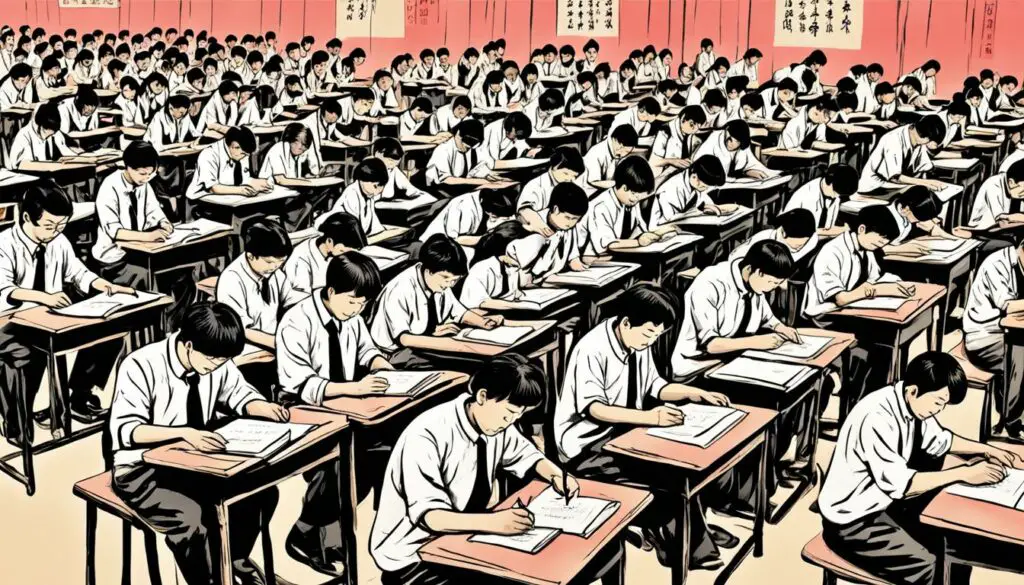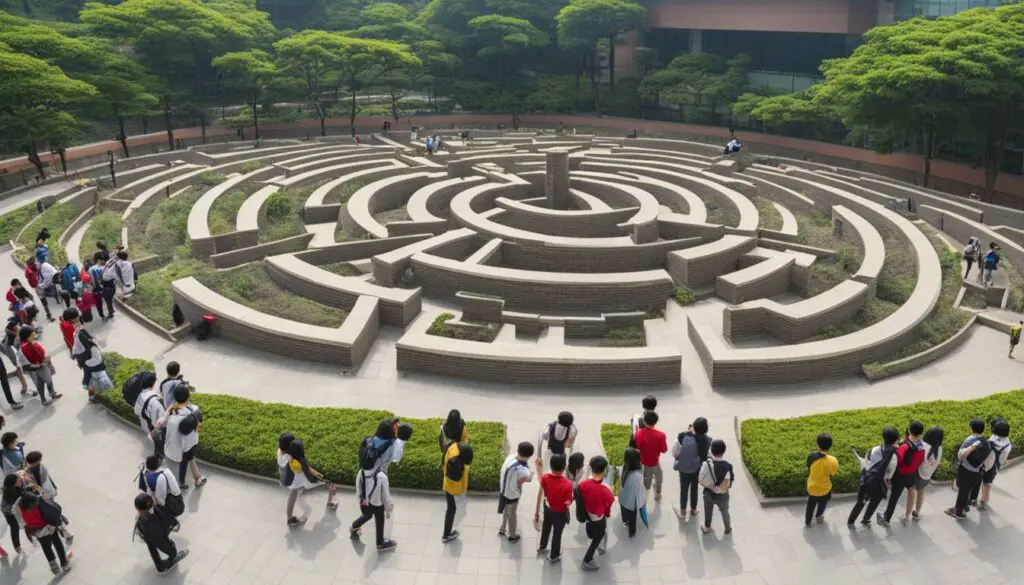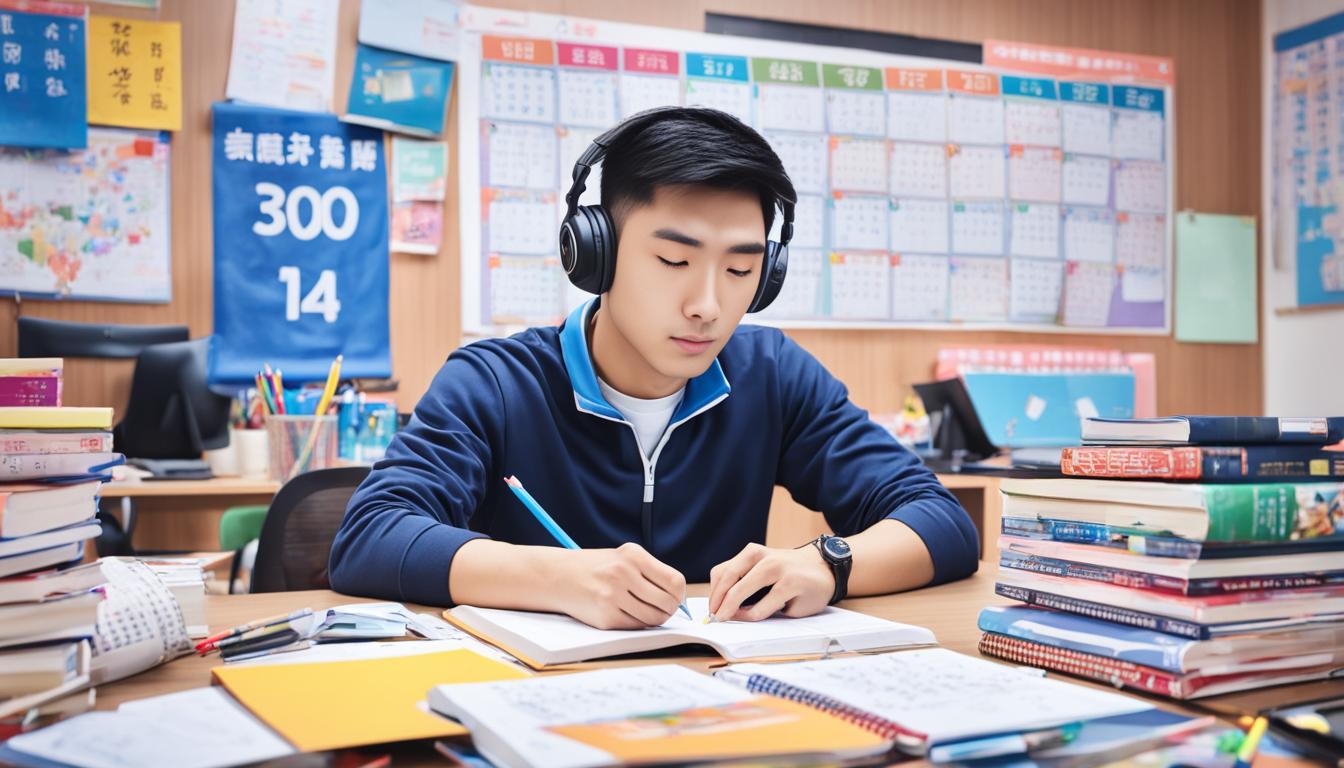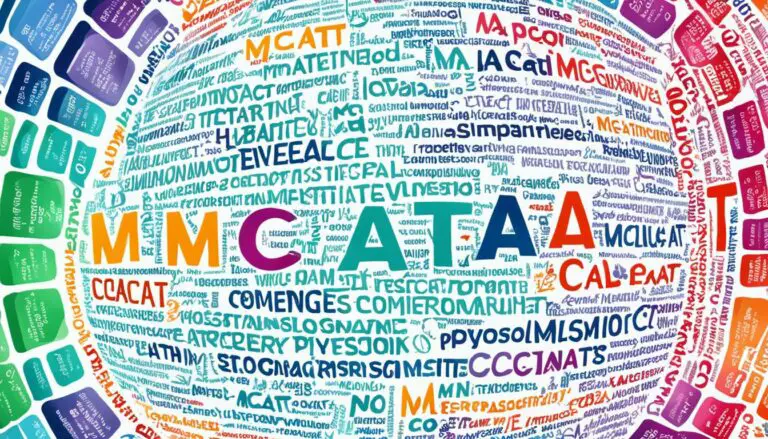Gaokao: Your Guide to China’s College Exam
Students spend years preparing for Gaokao as it significantly impacts their prospects. It covers subjects like Chinese literature, mathematics, foreign languages, and additional subjects based on the student’s chosen field.
The Gaokao exam is scored on a scale of 750 to 950 points, with different subjects carrying different weights. Universities use these results to determine admission, and they also influence career opportunities for students.
Understanding the Significance of Gaokao in Chinese Education
The History and Evolution of Gaokao
The gaokao, China’s national college entrance examination, has a rich history dating back to the early 20th century. Its roots can be traced back to the imperial examination system, used to select government officials based on their knowledge of Confucian texts. After founding the People’s Republic of China in 1949, the gaokao was established to ensure equal access to higher education and promote social mobility.
Over the years, the gaokao has evolved to meet the changing needs of society. Reforms have been introduced to make the examination fairer and more comprehensive, with adjustments in subject offerings and the introduction of standardized scoring systems to provide a more accurate assessment of students’ abilities.
Gaokao’s Role in University Admissions and Societal Impact
The gaokao plays a pivotal role in determining university admissions in China. It serves as a standardized measure of academic performance and a filter for selecting students for higher education. The gaokao results determine whether university students can attend and impact future career prospects.
Furthermore, the gaokao has a profound societal impact. Its competitive nature creates immense pressure on students, leading to a high-stress environment. The focus on gaokao preparation has influenced educational practices, emphasizing rote memorization and exam-oriented teaching methods.
Additionally, the gaokao has been a driving force behind education reform efforts, as policymakers continuously seek ways to improve the fairness and effectiveness of the examination.
Comparing Gaokao with College Entrance Exams Worldwide
While the gaokao is unique to China, it shares similarities and differences with college entrance exams in other countries. In terms of format, the gaokao is a comprehensive examination covering a range of subjects, similar to entrance exams in countries like Japan and South Korea.
However, compared to Western countries, where college admissions often consider a holistic review of applicants, the gaokao places a heavy emphasis on exam scores as the primary criterion for admission.

An Overview of Gaokao Subjects and Structure
The gaokao, China’s college entrance exam, covers many subjects that assess students’ knowledge and skills. The exam structure is carefully designed to evaluate the student’s academic abilities comprehensively. Let’s look at the subjects covered in the gaokao, its exam structure, and the different question types that students can expect.
🌟 Hey Students! 🚀 Ready for the ultimate experience? Join us on Studentsinside.com's Facebook, YouTube, WhatsApp, and LinkedIn. Click now for tips, fun, and success vibes! 🌈✨ #StudentLife #JoinUs
Subjects:
The gaokao comprises core subjects such as Chinese literature, mathematics, and foreign languages, including English. Additionally, students may have to take additional subjects depending on their chosen field of study or major. These other subjects include physics, chemistry, biology, history, geography, and political education.
Exam Structure:
The gaokao is typically scheduled for two to three consecutive days, depending on the province. Each day focuses on specific subjects, with specific timings outlined for each subject. The exam duration may vary but typically involves several hours of testing per subject.
Question Types:
The gaokao includes a variety of question types to assess students’ knowledge, understanding, and critical thinking skills:
- Multiple-choice questions: These questions present a statement or question with multiple options, and students must select the correct answer.
- Fill-in-the-blank questions: Students must fill in the missing words, phrases, or numbers in a sentence or a provided text.
- Short answer questions: These questions require students to provide concise responses, usually a few words or sentences, to demonstrate comprehension of a specific topic.
- Essay questions: Students are given a topic or prompt and are expected to write a well-structured essay, showcasing their analytical and writing skills.
- Practical and experimental questions: Certain subjects may include practical or experimental components, where students must conduct experiments, analyze data, or conduct observations.

Decoding the Gaokao Registration and Eligibility Requirements
Navigating the Registration Process for Potential Test-Takers
The gaokao registration process can be complex, but with proper guidance, potential test-takers can successfully navigate it. Here are the key steps involved in registering for the gaokao:
- Gather Required Documents: Students must collect the necessary documents, including their identification card, hukou (household registration) certificate, and other relevant paperwork.
- Verify Deadlines: It’s crucial to be aware of the registration deadlines set by the local education authorities. Missing the deadline may result in ineligibility to take the exam.
- Online Registration: Depending on the region, the gaokao registration may be conducted online. Students must visit the official registration website and provide their personal information, educational background, and other required details.
- Select Preferred Test Centers: Students can choose their preferred test centers during the registration process. It’s advisable to select a center that is convenient and easily accessible.
- Payment of Application Fees: Students must pay the gaokao application fees upon completing the registration process. The fee amount may vary depending on the region.

Once the registration process is complete, students will receive confirmation of their registration and further instructions regarding the examination dates and venues.
Understanding the Criteria for Eligibility
To be eligible to take the gaokao, students must fulfill specific criteria:
- Citizenship Requirements: Only Chinese citizens, including residents of Hong Kong, Macau, and Taiwan, are eligible to take the gaokao.
- Educational Prerequisites: Students must have completed the required years of compulsory education and graduated from a recognized secondary school.
Financial Considerations: Gaokao Application Fees and Waivers
There are financial considerations associated with the gaokao, including application fees and fee waivers:
| Financial Consideration | Description |
|---|---|
| Gaokao Application Fees | Students are required to pay application fees to register for the gaokao. The fee amount may vary depending on the region. |
| Gaokao Fee Waivers | Fee waivers are available for eligible students who meet specific criteria, such as low-income backgrounds or exceptional academic achievements. These waivers provide financial assistance by exempting students from paying the application fees. |
Students should research and inquire about the availability of fee waivers to reduce the financial burden associated with the gaokao registration process.
Gaokao Preparation: Strategies and Study Plans
Effective preparation strategies and study plans are crucial to excelling in the gaokao. Implementing these strategies can help students manage their time efficiently, cover all necessary subjects, and maximize their chances of success.
Here are some tips and techniques to help you prepare effectively for the gaokao:
- Time Management: Create a study schedule that allocates dedicated time for each subject. Prioritize subjects based on your strengths and weaknesses, and ensure you allocate sufficient time for revision.
- Set Achievable Goals: Break down your study goals into small, manageable tasks. Setting achievable goals will keep you motivated and prevent you from becoming overwhelmed.
- Follow a Study Plan: Develop a study plan that covers all the necessary topics and subjects for the gaokao. Allocate specific time slots for each subject and focus on completing the planned tasks within the designated time.
- Practice Past Exam Papers: Familiarize yourself with the gaokao question formats by practicing past exam papers. This will help you understand the exam structure, identify common question patterns, and improve your time management skills.
- Seek Guidance: Don’t hesitate to seek help from teachers, tutors, or classmates if you encounter difficulties. They can provide valuable insights, clarify concepts, and offer additional resources to enhance your understanding.
- Maintain a Balanced Lifestyle: While it’s crucial to dedicate sufficient time to studying, it’s equally essential to maintain a balanced lifestyle. Sleep well, eat nutritious meals, and engage in physical activities to keep your mind and body healthy.

Gaokao Implications: Scores, Results, and Future Prospects
Understanding how Gaokao scores are interpreted is crucial in assessing a student’s performance on the exam. Gaokao scores are presented on a scale of 750 to 950 points, each subject carrying a different weightage. Higher scores indicate a stronger performance and are generally associated with better chances of admission to prestigious universities.
The importance of Gaokao results cannot be overstated. Universities in China heavily rely on Gaokao scores when making admissions decisions. These results serve as a primary criterion for evaluating applicants and determining their enrollment eligibility.
Universities typically establish minimum Gaokao score requirements for each major, which directly influence a student’s chances of gaining admission to their desired program of study.
Gaokao’s results also have a significant impact on students’ career paths. Employers in China often consider Gaokao scores when assessing job candidates, especially for highly competitive positions. A standout performance on the Gaokao may give graduates a competitive advantage, leading to better job opportunities in their chosen fields.
While Gaokao scores are pivotal in shaping students’ futures, options are available for those who wish to explore different paths. Students dissatisfied with their Gaokao results can retake the exam in subsequent years to achieve better scores.
Additionally, alternative educational paths, such as vocational schools or international programs, offer viable alternatives to Gaokao-focused education. Some students may also consider pursuing overseas opportunities, where Gaokao scores may be less influential in university admissions.
FAQ
Q: What is the gaokao?
A: The gaokao is a standardized college entrance examination in China that determines university admission.
Q: How important is the gaokao?
A: The gaokao is one of China’s most critical and competitive exams, as it significantly impacts students’ prospects.
Q: What subjects are included in the gaokao?
A: The gaokao covers subjects like Chinese literature, mathematics, foreign languages, and additional subjects based on the student’s chosen field.
Q: How is the gaokao scored?
A: The exam is scored on a scale of 750 to 950 points, with different subjects carrying different weightages.
Q: How do gaokao results affect admissions?
A: Gaokao results are used by universities to determine admission and influence student career opportunities.
Q: Can you provide a brief history of the gaokao?
A: The gaokao has evolved over the years to become China’s standardized college entrance exam. It was introduced in 1952 and has undergone various changes and reforms.
Q: How does the gaokao compare with college entrance exams in other countries?
A: The gaokao differs from college entrance exams in other countries in terms of format, scoring system, and overall significance. However, the basic purpose of assessing students’ readiness for higher education remains the same.
Q: How can students prepare effectively for the gaokao?
A: Effective gaokao preparation involves time management, creating study schedules, setting achievable goals, practicing past exam papers, seeking help from teachers or tutors, and maintaining a balanced lifestyle.
Q: What are the steps for gaokao registration?
A: The gaokao registration process involves following specific steps, preparing required documents, and meeting critical deadlines.
Q: What are the eligibility criteria for the gaokao?
A: The eligibility criteria for the gaokao include citizenship requirements and educational prerequisites.
Q: Are there any financial considerations for the gaokao?
A: Yes, application fees are associated with the gaokao, but fee waivers may be available for eligible students.
Q: How are gaokao scores interpreted?
A: Gaokao scores indicate a student’s performance in the exam and are used to determine their ranking among other test takers.
Q: How does gaokao influence college admissions and career paths?
A: Gaokao results play a significant role in college admissions decisions and can impact students’ future career paths and job opportunities.
Q: What options are available to students post-gaokao?
A: After the gaokao, students have options such as retaking the exam, considering alternative educational paths, or exploring overseas opportunities.








